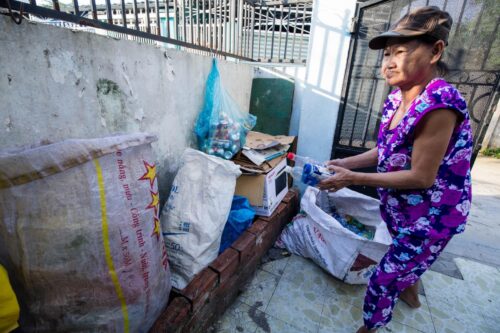Case Study: Behavior Change in Local Systems to Mitigate Ocean Plastic Pollution

Related Resources
View all tools and resources
Fact Sheet
MWRP Vietnam: Reducing Mismanaged Plastic Waste By Organizing Independent Waste collectors
May 19, 2020
Fact Sheet
MWRP Vietnam: Building a Green City through Women-Led Plastic Recycling
May 19, 2020
Fact Sheet
Municipal Waste Recycling Program (MWRP) – Vietnam Country Profile
May 19, 2020

